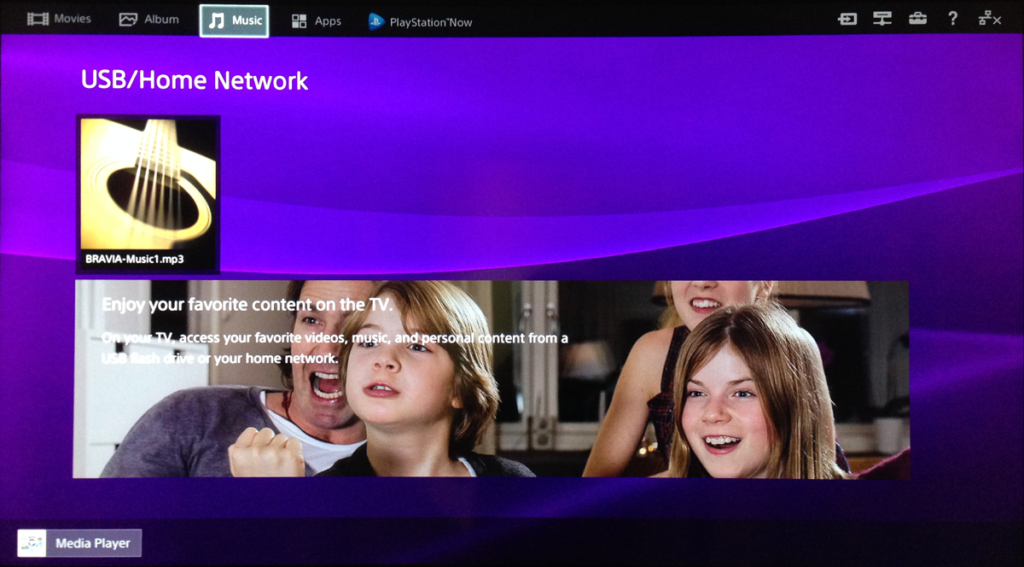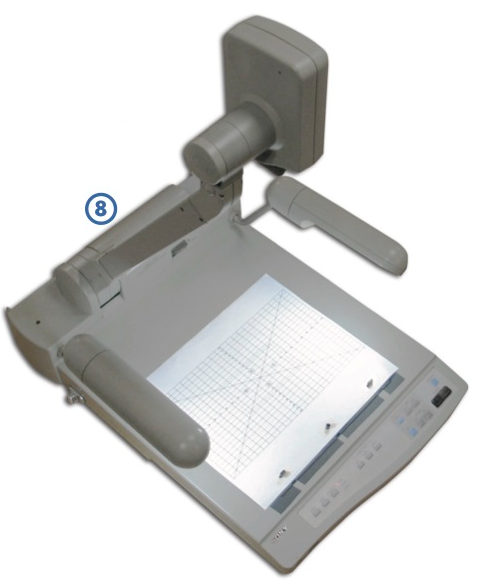Character Animation Carts 1, 2, 3, 7 (HDTVs)
Getting Started

Plug in the cart’s power cord, and turn on any equipment you need to use (the Apple TV will power up automatically).
Press Power [1] on the TV remote to turn on the TV. Press it again to turn it off. The TV will take a moment to fully power up.
When finished, please shut down the Mac mini and turn the TV off before unplugging the cart.
Choosing a Source
All sources are switched using only the TV. To view a source, choose an input as shown below.
To change the TV input, press the Input [2] button on the remote. Use the arrows on the control pad [3] to highlight a source, then press the center button to select it.
Repeatedly pressing Input will also cycle through the available sources.
If the TV does not display a source, give it a few seconds – HDMI equipment can take several seconds to connect.
Home Screen

If you see a screen similar to the one above, press Home [4] on the remote to dismiss it and return to normal operation. Internet functionality is not enabled on these TVs.
Sound
Use the Volume and Mute buttons [5] on the TV remote to control the sound. If no sound is heard, make sure the Soundbar beneath the TV is turned on, the Soundbar’s Input is set to Aux, and its Volume is set to 60.
Built-in Devices
| To view: | TV input: |
| Mac mini | Mac mini |
| Blu-ray, DVD, or CD | Blu-ray/DVD |
| Apple TV | Apple TV |
External Devices
| To view: | TV input: |
| Camera Stand – Display | Camera |
| Camera Stand – TVPaint Capture | Mac mini |
| Laptop (VGA cable) | Laptop |
| Laptop (HDMI cable) | Aux. HDMI |
| Other HDMI (iPads, etc.) | Aux. HDMI |
Mac mini
There is a Mac mini built into the rack. Press its power button to turn it on. The wireless mouse and keyboard should automatically connect to the computer. The mouse should always be left on.
In order to use the Mac mini – the cart must be plugged into one of CalArts’ network ports. The cart’s network port is on the front of the cart, next to the Cintiq connector. All classrooms should have a network port – they’re color-coded orange.
Before unplugging the cart, be sure to log out of the Mac mini, and choose Shut Down at the login window.
The volume keys on the keyboard do not work with HDMI. You must use the TV’s remote [5] to control the Mac mini’s volume.
Cintiq

First log in. Then plug one end of the Cintiq’s USB-C cable into the connector on the front of the equipment rack, and the other end of the cable into any of the three USB-C connectors on the Cintiq [6]. Press and hold the power button [7] on the top of the Cintiq for about three seconds to turn it on . To enable/disable display mirroring, press cmd + F1.
Laptops
For laptops with HDMI connectors, plug an HDMI cable into the Aux HDMI input. For laptops with Mini DisplayPort or Thunderbolt, use a Mini DisplayPort to HDMI adapter.
For other laptops, plug in a VGA cable for video (adapters are provided in the rack’s drawer), and an audio cable if sound is needed. Generally, it works best to turn the laptop’s volume up to about 80%.
If you need access to CalArts’ wired network, you will need to plug into one of the room’s network ports.
iPads/iPods/iPhones
Use either the Dock or Lightning to HDMI adapter, and plug into Aux. HDMI. Copy-protected videos will not play through an HDMI adapter. You can also use AirPlay to wirelessly connect to the Apple TV.
Camera Stand

Place the twist-lock end of the video cable into the back of the camera stand [8], and the other end into the Camera Stand/Video Capture input on the equipment rack. Plug in the camera stand’s power cord, and turn on its power switch.
To display video from the camera stand, select Camera as the TV input.
Video from the camera can also be captured with TVPaint. Use the same project settings as for the pencil test systems: NTSC > DV 4:3, Frame Rate = 24, Field = Progressive.
